A Day at the Mancheng Han Tombs: A Must-Visit for History Buffs
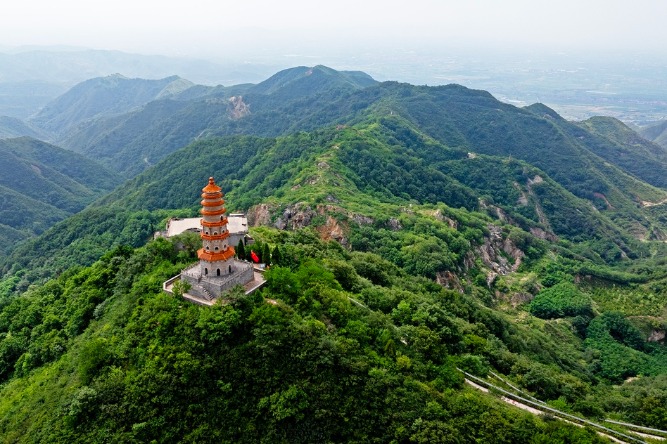
An Essential Guide to Visiting Mancheng Han Tombs
In This Guide
- An Essential Guide to Visiting Mancheng Han Tombs
- The Rich History and Legends of Mancheng Han Tombs
- Main Highlights: What You Absolutely Can’t Miss
- Planning Your Visit: A Practical Guide
- Tickets: Prices, Booking, and Tips
- How to Get There: A Complete Transportation Guide
- Local Cuisine and Accommodation Nearby
- Frequently Asked Questions
- Final Thoughts on Your Trip
Nestled within the serene contours of the Taihang Mountains lies a hidden gem that echoes the grandeur of ancient China—the Mancheng Han Tombs. This archaeological wonder, located just southwest of Mancheng County, offers international travelers a rare glimpse into the opulent funerary traditions of the Han Dynasty, one of China’s golden ages.
Dating back over two millennia, the tombs of Liu Sheng, a prince of the Han Dynasty, and his wife Dou Wan, were only unearthed in the 1970s following an unexpected discovery during military excavations. What ensued was a monumental archaeological endeavor that revealed not only the intricate designs of the tombs but also astonishing artifacts, including the famous jade burial suits that reflect the era’s sophisticated craftsmanship and beliefs about the afterlife.
Visiting the Mancheng Han Tombs is more than just a trip to a historical site; it’s an immersive journey into the past. From the moment you step onto the grounds, the atmosphere is charged with reverence for the lives once lived and the legacies left behind. The tombs, set against a dramatic backdrop of mountains, can be accessed via a scenic cable car ride, adding an element of adventure to your exploration. Here, you’ll find not just the tombs themselves, but also a small temple perched atop the hill, offering panoramic views of the surrounding landscape.

Mancheng Han Tombs.
As you prepare for your visit, consider the following essential tips to enrich your experience:
- Timing Your Visit: The site is open daily from 8:00 AM to 5:30 PM, making it accessible for both early risers and those who prefer a leisurely morning.
- Entrance Fees: Access to the tombs is reasonably priced, with tickets costing around 40 RMB. The cable car ride, which offers stunning views, is approximately 50 RMB.
- Travel Logistics: If you’re venturing from Beijing, be prepared for a scenic but lengthy drive—approximately 1,400 RMB for a taxi ride. Public transport options may also be available, but check local schedules in advance.

Mancheng Han Tombs.
Immerse yourself in the rich tapestry of Chinese history at the Mancheng Han Tombs, a site where every stone and artifact tells a story of power, artistry, and the timeless human connection to the afterlife. Your journey here will not only deepen your understanding of the Han Dynasty but will also leave you with unforgettable memories of a civilization that shaped the course of China’s history.
The Rich History and Legends of Mancheng Han Tombs
Nestled in the picturesque landscapes of Hebei Province, the Mancheng Han Tombs offer an extraordinary glimpse into China’s ancient past, particularly during the Han Dynasty (206 BC – 220 AD). This archaeological treasure, discovered in the late 1960s, is not just a burial site but a rich tapestry of history woven with legends, reflecting the grandeur of imperial China.
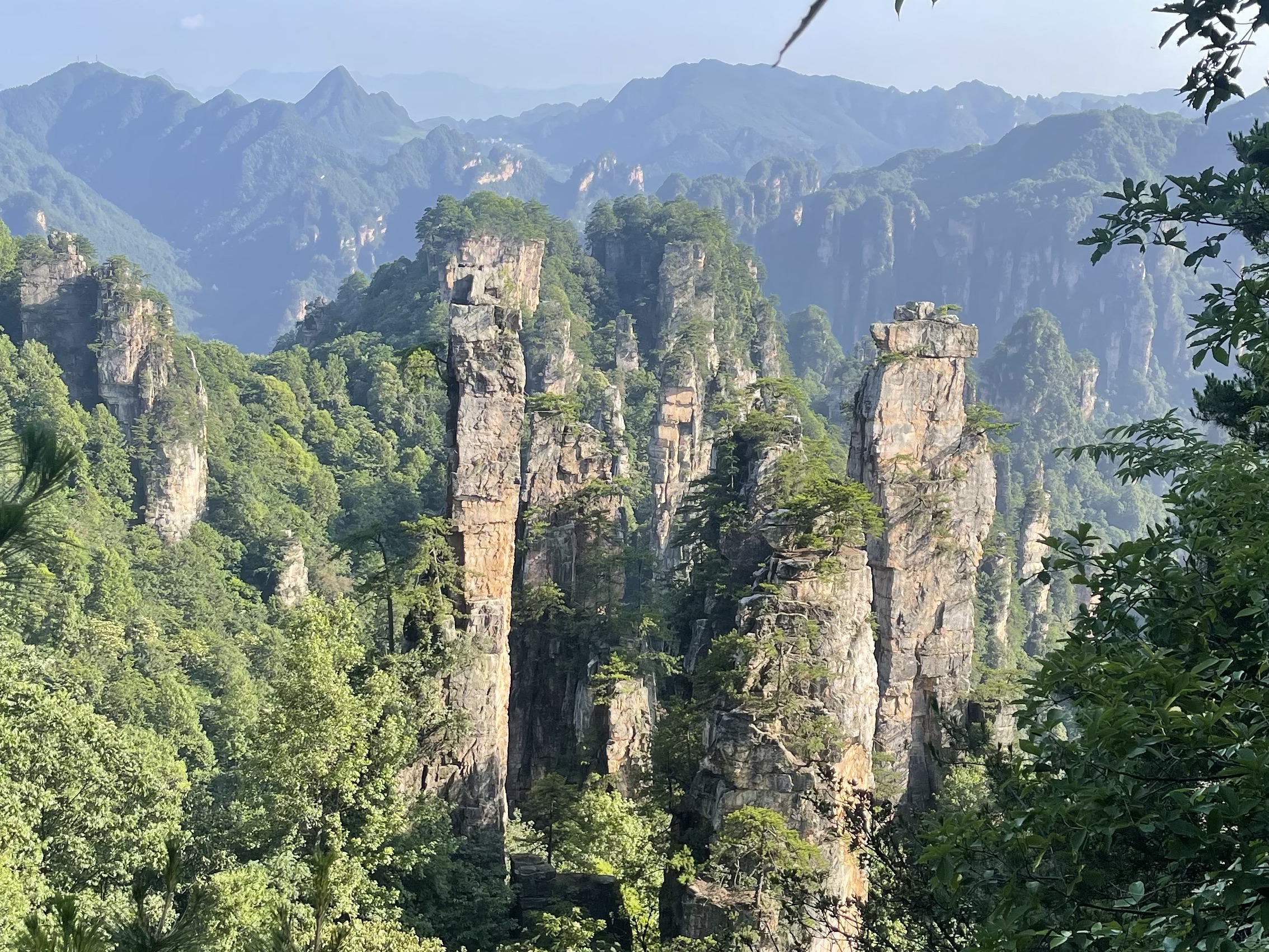
Mancheng Han Tombs.
The Discovery
The tombs were unearthed somewhat serendipitously in 1968 when a People’s Liberation Army construction unit, working on secret anti-aircraft positions, inadvertently blasted their way into the side of a mountain. What should have been a routine excavation turned into a monumental archaeological find: the entrance to an ancient burial complex filled with pottery, jade artifacts, and the remarkable jade burial suits of the royal occupants. This discovery was so significant that it caught the immediate attention of high-ranking officials, including Chairman Mao Zedong and Premier Zhou Enlai, who authorized further excavations.
The Royal Inhabitants
The primary tombs at Mancheng belong to Liu Sheng, a prince of the Han Dynasty and son of Emperor Jing of Han, and his wife Dou Wan. Liu Sheng was granted the fief of Zhongshan and ruled during a politically turbulent time marked by the Rebellion of the Seven States. His reign saw him navigate the complexities of feudal governance, making him one of the more successful rulers of his time.
Liu Sheng’s life and position in the royal lineage imbued the tombs with significant historical weight. His burial site reflects the opulence of Han royal culture, showcasing intricate artifacts and the exquisite craftsmanship of jade burial suits—symbols of the deceased’s noble status and a belief in an afterlife.
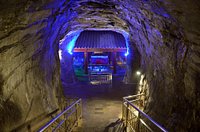
Mancheng Han Tombs.
Architectural Marvels
The tombs are ingeniously carved into the cliff face of Mausoleum Hill, which adds an element of grandeur to their historical significance. Visitors can access these ancient chambers via a scenic cable car ride, offering breathtaking views of the surrounding landscape. Once at the site, the atmosphere is imbued with a sense of reverence as one stands on the threshold of a royal resting place that has lain undisturbed for over two millennia.
Legends and Cultural Significance
The Mancheng Han Tombs are steeped in legends that speak to the spiritual beliefs of the Han Dynasty. It was customary for the elite to equip their tombs with items meant for the afterlife, reflecting their status and ensuring comfort in the next world. The jade burial suits, in particular, are surrounded by tales of their protective qualities, believed to ward off decay and evil spirits.
There are also stories about the mystical powers attributed to jade itself, which was revered in ancient China as a symbol of purity and moral integrity. The jade artifacts found within the tombs are not merely decorative but serve as markers of the deceased’s journey into the afterlife, laden with hopes and aspirations for a blissful existence beyond death.
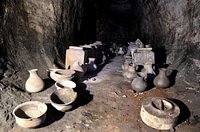
Mancheng Han Tombs.
A Window into the Past
Today, the Mancheng Han Tombs stand as a testament to the rich heritage of the Han Dynasty, one of the most influential periods in Chinese history. The site not only captivates historians and archaeologists but also enchants travelers eager to connect with the echoes of a bygone era. Visitors can explore the artifacts displayed within the tombs, including pottery and jade pieces, which help paint a vivid picture of life during the Han Dynasty.
Conclusion
A visit to the Mancheng Han Tombs is more than just a journey into the past; it is an exploration of the cultural and historical legacy that has shaped modern China. As you stand before the ancient cliffside tombs, you can almost hear the whispers of history, inviting you to delve deeper into the stories of the emperors, the legends of jade, and the artistry that has endured through the ages. Whether you are an avid history buff or a curious traveler, the Mancheng Han Tombs promise an unforgettable experience steeped in the richness of Chinese heritage.

Mancheng Han Tombs.
Main Highlights: What You Absolutely Can’t Miss
Discover the Mancheng Han Tombs: A Journey into Ancient History
Nestled in the scenic landscapes of Mancheng County, the Mancheng Han Tombs (满城汉墓) offer a fascinating glimpse into the opulent life and elaborate burial practices of the Han Dynasty (206 BCE – 220 CE). As an essential site for anyone captivated by Chinese history and culture, here are the highlights that you absolutely cannot miss during your visit.
1. The Tombs of Liu Sheng and Dou Wan
The crown jewel of the Mancheng Han Tombs is the final resting place of Prince Liu Sheng and his wife, Dou Wan. Discovered accidentally by the People’s Liberation Army in 1968 during a routine excavation, these tombs provide profound insights into the funerary customs of the Han elite. Liu Sheng, a prince of notable lineage, was the son of Emperor Jing of Han, and his tomb reflects his significant status through its grandeur and artifacts.
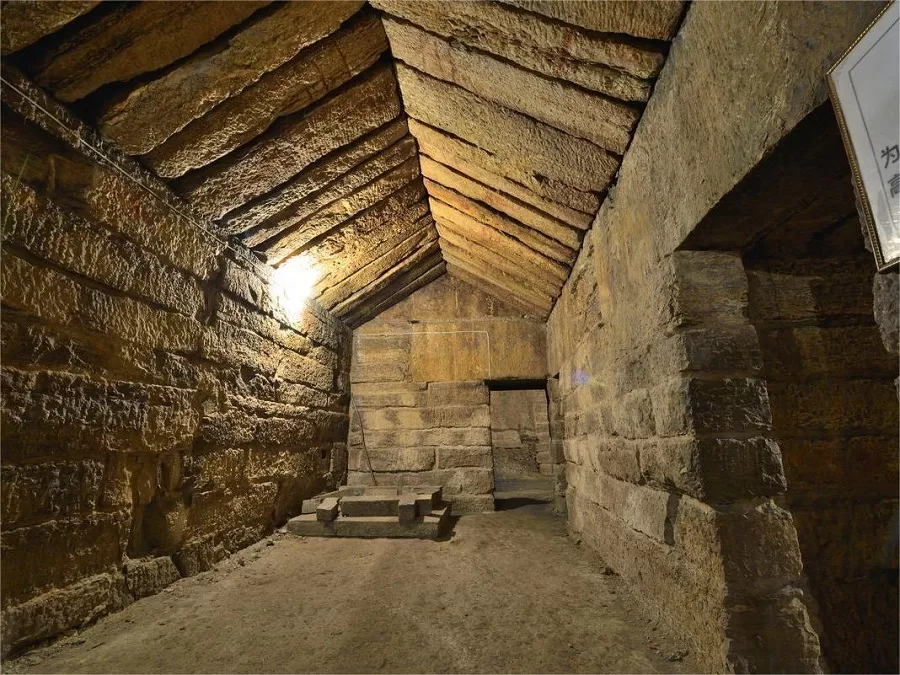
Mancheng Han Tombs.
2. Jade Burial Suits
One of the most remarkable features of the tombs is the jade burial suits found within. Crafted from thousands of jade pieces sewn together with gold wire, these suits were believed to protect the deceased in the afterlife. The intricate craftsmanship and the sheer wealth they represent are a testament to the artistry and beliefs of the Han Dynasty. Don’t miss the opportunity to admire these stunning artifacts up close.
3. The Cliffside Location
The tombs are ingeniously situated within a cliff face, which adds an adventurous element to your visit. You can take a scenic cable car ride that offers breathtaking views of the surrounding mountains, enhancing your experience of this historical site. The ride lasts approximately 15 minutes and costs around 50 RMB, allowing you to ascend to the tombs with ease.
4. Archaeological Insights
The site is still a subject of ongoing archaeological interest. While some parts of the area are being developed into a museum, the existing exhibits offer an engaging look at the artifacts unearthed from the tombs. As you explore, you can view various relics, including pottery and wooden items that provide context to the lives of those who were buried here.
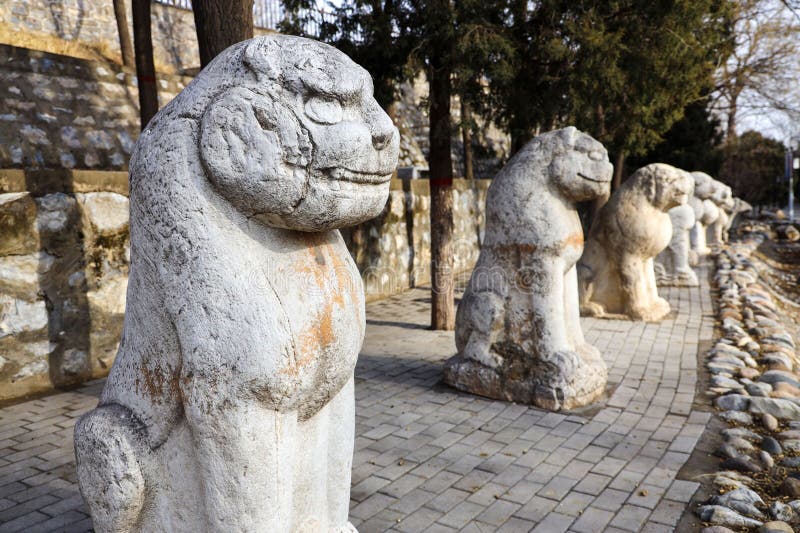
Mancheng Han Tombs.
5. Mausoleum Hill
After exploring the tombs, take a moment to appreciate Mausoleum Hill (陵山), where the tombs are located. This triple-peaked hill not only offers stunning panoramas but also serves as a reminder of the strategic importance of the region throughout Chinese history. The area is rich in natural beauty, making it an excellent spot for photography and quiet reflection.
6. Cultural Significance
Understanding the historical context of the Han Dynasty enhances your visit. This period marked a pivotal time in Chinese history, characterized by advancements in culture, technology, and governance. The Mancheng Han Tombs serve as a microcosm of this dynamic era, providing visitors with a powerful connection to the past.

Mancheng Han Tombs.
7. Visitor Information
- Opening Hours: Daily from 8:00 AM to 5:30 PM.
- Entrance Fee: Approximately 40 RMB.
- Location: Southwest of Mancheng County, easily accessible by taxi or private car.
Conclusion
The Mancheng Han Tombs are more than just ancient burial sites; they are portals into a bygone era filled with intrigue, artistry, and culture. Whether you are a history buff or a casual traveler, experiencing the grandeur of these tombs is an unforgettable journey into the heart of Chinese heritage. Don’t forget your camera and a sense of wonder as you step into this remarkable chapter of history!
Planning Your Visit: A Practical Guide
Essential Information for Your Visit to the Mancheng Han Tombs
The Mancheng Han Tombs, a remarkable archaeological site nestled in the scenic hills of Hebei province, are a must-see for history enthusiasts and anyone intrigued by Chinese culture. The tombs date back over 2,000 years and are the final resting place of Liu Sheng, a prince of the Han dynasty, and his wife, Dou Wan. Here’s everything you need to know to make your visit both enjoyable and enlightening.
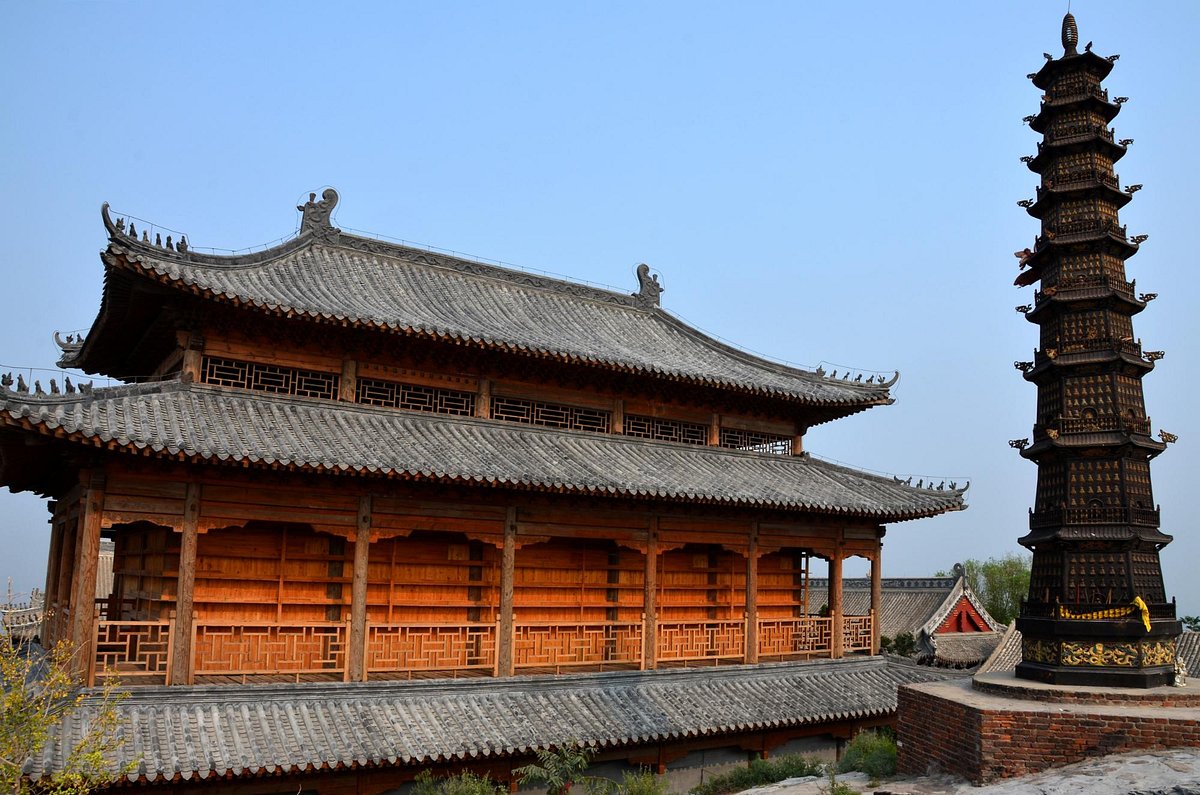
Mancheng Han Tombs.
Location and Getting There
Address:
Mausoleum Hill, Southwest of Mancheng County, Mancheng County 072150, China
The Mancheng Han Tombs are located about 140 kilometers from Beijing, making them accessible for a day trip. Travelers can reach Mancheng by taxi, with costs averaging around 1,400 RMB from the city. Alternatively, consider renting a car or joining a guided tour for a more immersive experience. Local buses may also be available, but schedules can vary.
Opening Hours
- Daily: 8:00 AM – 5:30 PM
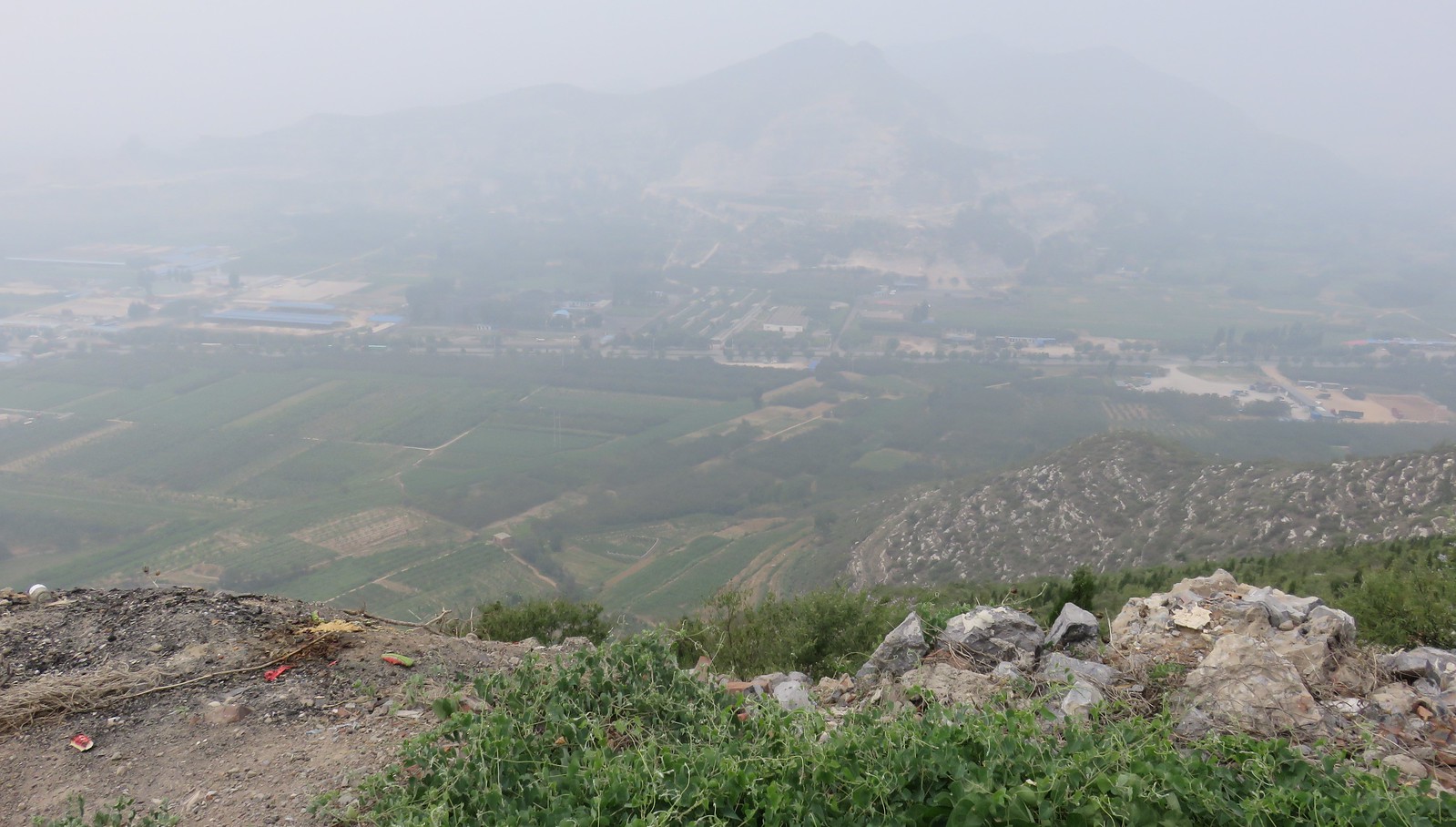
Mancheng Han Tombs.
Be sure to check the opening hours before your visit, especially during public holidays, as hours may change.
Admission Fees
- Entrance Fee: 40 RMB
- Cable Car Fee: 50 RMB (round trip)
The cable car ride, taking approximately 15 minutes, offers stunning views as you ascend to the tombs perched on the hillside.

Mancheng Han Tombs.
What to Expect
Upon arrival, you will be greeted by the impressive sight of the triple-peaked Mausoleum Hill, which not only serves as the backdrop for the tombs but is also steeped in history. The tombs themselves are housed within cliff caves, recently opened to the public after being sealed for nearly two millennia.
- Key Highlights:
- Tomb of Liu Sheng and Dou Wan: Explore the opulent burial site featuring intricate jade burial suits and a variety of artifacts that provide insight into Han dynasty burial practices.
- Nearby Temple: At the summit, you’ll find a temple that adds another layer of historical significance to your visit.
- Future Museum: Plans for a museum are underway, which will further showcase the rich history and artifacts of the site.
Tips for Your Visit
- Dress Comfortably: Wear comfortable shoes, as exploring the site involves some walking and potentially uneven terrain.
- Timing Your Visit: Early morning or late afternoon visits can help you avoid the crowds and allow for a more serene experience.
- Photography: Bring a camera to capture the stunning landscape and historical artifacts, but be respectful of any restrictions on flash photography.
- Guided Tours: Consider joining a guided tour for a more comprehensive understanding of the historical context and significance of the tombs.
Nearby Attractions
Extend your visit by exploring other nearby attractions:
– Yaoshan Manor of Wang’s Family: Ancient ruins featuring impressive architectural designs.
– Longtan Valley: A picturesque area known for its natural beauty and hiking opportunities.
– Mulan Cavern: Renowned for its dramatic rock formations and tranquil atmosphere.
Where to Eat and Stay
While dining options in Mancheng may be limited, local restaurants offer authentic Chinese cuisine. If you’re planning to stay overnight, consider booking accommodations in Baoding, which offers a wider selection of hotels and dining options.
Conclusion
A visit to the Mancheng Han Tombs is not just a journey through history but also an exploration of Chinese cultural heritage. With careful planning and an adventurous spirit, you can create lasting memories while standing in the presence of ancient royalty. Whether you are a history buff or simply curious about the past, this site promises an enlightening experience.
Tickets: Prices, Booking, and Tips
When planning your visit to the Mancheng Han Tombs, it’s essential to know how to navigate the ticketing process, including pricing, booking options, and some handy tips for a smooth experience.
Ticket Prices
- Entrance Fee: The standard admission fee to the Mancheng Han Tombs is 40 RMB per person. This ticket grants you access to the tombs and the surrounding historical sites.
- Cable Car Ride: To reach the tombs, you can take a scenic cable car ride that offers stunning views of the cliffside. The round-trip fare for the cable car is 50 RMB and takes about 15 minutes each way.
Booking Information
- On-site Purchase: Tickets can be purchased directly at the entrance of the site. It’s advisable to arrive early, especially during weekends or holidays, as the site can get crowded.
- Group Tours: If you’re traveling in a group or prefer a guided experience, consider booking through tour operators that offer packages including transportation and a guide. This can enhance your understanding of the historical significance of the tombs and artifacts.
Tips for Visitors
- Best Time to Visit: The tombs are open year-round, but visiting in spring (April to June) or autumn (September to November) is ideal for pleasant weather and fewer crowds.
- Plan Your Day: Allocate at least half a day for your visit to fully enjoy the site, including time for the cable car ride, exploring the tombs, and visiting the nearby temple located at the top of the hill.
- Transportation: If you’re planning a day trip from Beijing, expect a taxi ride to cost around 1,400 RMB. Alternatively, consider using public transport or joining a guided tour that includes transportation.
- What to Bring: Wear comfortable walking shoes and bring water, as you may want to hike around the area to fully appreciate its beauty and history.
By keeping these details in mind, you can ensure a memorable visit to the Mancheng Han Tombs, a remarkable testament to China’s rich Han Dynasty heritage.
How to Get There: A Complete Transportation Guide
Getting to the Mancheng Han Tombs: Your Transportation Guide
Visiting the Mancheng Han Tombs (满城汉墓), a remarkable archaeological site steeped in history, requires a bit of planning, especially if you’re traveling from major cities like Beijing. Below is a comprehensive transportation guide to help you navigate your way to this fascinating location.
By Air
The nearest major airports to the Mancheng Han Tombs are:
- Beijing Capital International Airport (PEK): Approximately 150 kilometers away.
- Beijing Daxing International Airport (PKX): About 175 kilometers away.
Both airports offer numerous international and domestic flights. Upon arrival, you can choose various transportation options to reach Mancheng.
By Train
Traveling by train is a convenient option, especially from Beijing:
- Take a Train to Baoding:
- Board a high-speed train from Beijing South Railway Station to Baoding Railway Station. The journey typically takes around 1 to 1.5 hours.
-
Trains run frequently throughout the day, making it easy to find a suitable time.
-
Transfer to Mancheng:
- From Baoding Railway Station, you can take a taxi or a local bus to Mancheng County, which is about 30 kilometers away. The taxi ride will take approximately 40 minutes, while buses may take longer depending on traffic.
By Bus
For those traveling on a budget, taking a long-distance bus from Beijing to Baoding is an option:
- Bus Stations: Depart from either Liujiayao Bus Station or Sihui Bus Station in Beijing.
- Duration: The bus journey can take around 2 to 3 hours depending on traffic.
- Cost: Generally more economical than taking a taxi or train, with ticket prices ranging from 60 to 100 RMB.
Once in Baoding, similar to the train option, you will need to take a taxi or bus to Mancheng.
By Taxi or Ride-Hailing Services
If you prefer direct transportation, consider hiring a taxi or using ride-hailing apps like Didi Chuxing:
- From Beijing: Expect to pay approximately 1,400 RMB for a one-way trip, which will take around 2.5 to 3 hours depending on traffic conditions.
- From Baoding: A taxi from Baoding to Mancheng will cost around 100-200 RMB and take about 40 minutes.
On-site Transportation
Once you arrive in Mancheng, accessing the Han Tombs is straightforward:
- Cable Car: The tombs are located on a hillside and can be reached via a cable car. The ride lasts around 15 minutes and costs approximately 50 RMB round trip.
- Entrance Fee: Visitors will need to pay an entrance fee of 40 RMB to explore the site.
Recommendations
- Best Time to Visit: Plan your visit during weekdays to avoid crowds, especially in peak tourist seasons (spring and autumn).
- What to Bring: Comfortable shoes are a must, as you’ll be navigating the hilly terrain. Don’t forget your camera to capture the stunning views and historical artifacts.
By following this guide, you’ll be well-equipped to make the journey to the Mancheng Han Tombs, a site that promises to enrich your understanding of China’s ancient history and culture. Enjoy your visit!
Local Cuisine and Accommodation Nearby
Visiting the Mancheng Han Tombs offers not just a glimpse into the opulent world of the Han dynasty but also an opportunity to indulge in local flavors and find comfortable accommodations. Here’s a guide to ensure your culinary and lodging experiences complement your historical exploration.
Culinary Delights of Mancheng
Mancheng’s local cuisine is a delightful fusion of traditional Hebei flavors and Han dynasty influences. Here are some must-try dishes and where to find them:
-
Mancheng Noodles (满城面条): A local favorite, these hand-pulled noodles are often served in a rich, savory broth with fresh vegetables and tender meat. Look for small, family-run eateries in the area for an authentic experience.
-
Jiaozi (饺子): Dumplings are a staple in Chinese cuisine, and in Mancheng, you can find them stuffed with a variety of fillings, including pork, vegetables, and even local herbs. Enjoy them steamed or boiled, paired with a tangy dipping sauce.
-
Roast Duck (烤鸭): While Peking duck is world-renowned, don’t miss out on trying the local version here. The ducks are often marinated in a unique blend of spices before being roasted to perfection.
-
Guanxi (罐熏): A local specialty, this dish involves meats or fish cooked in a clay pot with aromatic herbs and spices, creating a tantalizing flavor profile.
For dining, consider visiting these popular spots:
-
Mancheng Restaurant (满城饭店): Known for its hearty local dishes and friendly service, this restaurant is perfect for families and groups.
-
Dumpling House (饺子馆): A small eatery famous for its freshly made dumplings. The atmosphere is cozy and inviting, making it a great place to relax after a day of exploring.
-
Local Street Vendors: Don’t overlook the street food scene! Vendors selling grilled skewers and fried snacks can be found near the tombs, offering an authentic taste of local life.
Accommodation Options
When it comes to resting after a day of historical exploration, Mancheng offers several accommodations that cater to various budgets and preferences:
-
Mancheng Hotel (满城宾馆): This comfortable hotel boasts modern amenities and is conveniently located near the tombs. It offers both Chinese and Western breakfast options, ensuring a good start to your day.
-
Yuhuang Hotel (玉皇酒店): A mid-range option that provides cozy rooms and a restaurant serving local cuisine. The hotel staff is known for their hospitality and can assist with tour arrangements.
-
Baoding Yijia Hotel (保定宜家酒店): Located slightly further from Mancheng, this hotel features spacious rooms and is a good choice for travelers seeking a quieter atmosphere. It is also close to other attractions in Baoding.
-
Guesthouses: For a more intimate experience, consider staying at a local guesthouse. These often provide a chance to interact with local families and get a deeper insight into everyday life in Mancheng.
Final Thoughts
Whether you’re savoring the local dishes or relaxing in comfortable accommodations, your visit to the Mancheng Han Tombs will be enriched by the flavors and hospitality of this historically vibrant region. Embrace the opportunity to experience the culture that has thrived for centuries, and let each meal and night’s stay be a part of your journey through time.
Frequently Asked Questions
Frequently Asked Questions about Mancheng Han Tombs
1. What are the Mancheng Han Tombs?
The Mancheng Han Tombs are the ancient burial sites of Liu Sheng, a prince of the Han Dynasty, and his wife, Dou Wan. Discovered in 1968 during a military excavation, these tombs are remarkable for their well-preserved artifacts, including jade burial suits and pottery, and they provide significant insights into the culture and customs of the Han Dynasty.
2. How do I get to the Mancheng Han Tombs?
The tombs are located in Mancheng County, Hebei Province, approximately 130 kilometers (about 81 miles) from Beijing. Visitors can reach the site by car, taxi, or bus. A taxi from Beijing typically costs around 1,400 RMB. Alternatively, local public transportation options may be available, but it’s advisable to check the latest schedules.
3. What are the entrance fees and operating hours?
As of the latest information, the entrance fee to the Mancheng Han Tombs is 40 RMB. The site is open daily from 8:00 AM to 5:30 PM, allowing plenty of time for exploration.
4. Is there a cable car available?
Yes, there is a cable car that takes visitors up to the tombs, which are situated on a small mountain. The ride lasts approximately 15 minutes and costs around 50 RMB each way. This is a great option for those who prefer a more leisurely ascent.
5. What can I expect to see at the site?
Visitors to the Mancheng Han Tombs can explore the impressive cliffside tombs, which house a variety of artifacts, including the famous jade burial suits. The site also features a temple at the hilltop, enhancing the overall experience with cultural and historical significance.
6. Are there any guided tours available?
While self-guided exploration is encouraged, there are often local guides available for hire. These guides can provide in-depth knowledge about the history and significance of the tombs, making your visit more enriching.
7. Is it suitable for families and children?
Absolutely! The Mancheng Han Tombs offer a fascinating glimpse into Chinese history that can be educational and enjoyable for visitors of all ages. The cable car ride and the scenic views from the hilltop also add to the family-friendly experience.
8. Are there any other attractions nearby?
Yes, the area around the Mancheng Han Tombs features several other points of interest, including the Yaoshan Manor of Wang’s Family and various natural parks. Visitors can easily spend a full day exploring these sites, making it a perfect day trip from Beijing.
Final Thoughts on Your Trip
As your journey through the captivating wonders of the Mancheng Han Tombs comes to a close, it’s essential to reflect on the profound experiences and insights gained during your visit. This remarkable site is not merely a collection of ancient structures; it is a portal into a world rich with history, culture, and the stories of the Han Dynasty—a period that laid the foundations of Chinese civilization as we know it today.
Embrace the Legacy
Standing before the tombs of Prince Liu Sheng and his wife Dou Wan, you are connected to over two millennia of history. The intricate jade burial suits and the artifacts that accompany them whisper tales of a bygone era, inviting you to ponder the lives of those who once walked this land. The discovery of these tombs, hidden for centuries, serves as a poignant reminder of the remarkable resilience of human history.
A Journey Worth Taking
The scenic cable car ride to the tombs offers breathtaking views of the surrounding landscape, enhancing the sense of adventure that accompanies your exploration. Whether you’re a history buff, a culture enthusiast, or simply a curious traveler, the Mancheng Han Tombs provide an enriching experience that resonates long after you’ve left.
Practical Tips for Future Travelers
If you find yourself yearning to revisit this historical treasure, here are a few tips to enhance your experience:
- Timing Your Visit: Aim to visit during weekdays to avoid crowds and enjoy a more intimate exploration of the site.
- Combine Your Journey: Consider pairing your visit with other nearby attractions, such as the Western Qing Tombs or the charming town of Baoding.
- Engage with Local Culture: Don’t miss the opportunity to interact with local guides who can offer deeper insights into the significance of what you see.
Conclusion
In conclusion, the Mancheng Han Tombs are not just a destination; they are an invitation to understand the complexities of China’s past. As you leave this extraordinary site, carry with you the wisdom of history and the stories of those who came before. Your journey through time has just begun—may it inspire you to seek out more of the world’s hidden gems and the narratives they hold. Safe travels!